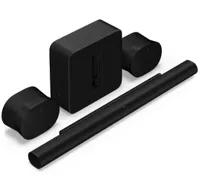I set up an incredible Dolby Atmos soundbar experience in my living room — unfortunately, it's really annoying to live with

Just like most cinephiles, I can't get enough of a good surround mix. Something that makes it sound and feel like my movies are happening all around me, so that I'm immersed in the world of whatever movie I might be watching.
For a long time, it was an assembled bunch of speakers and old gear that I'd bought from eBay that gave me my surround sound mix — but when I heard that the Sonos Arc Ultra could create a similarly excellent movie experience, my interest was piqued.
So I decided to give it a test and see how good it might sound, how simple it is to use and how easy it is to live with. Spoiler alert: Unfortunately, not everything was plain sailing during my Sonos Arc Ultra surround sound journey.
This is exactly the system that I used to test out the spatial audio potential of the Arc Ultra. It's not cheap, but it absolutely blew me away with its sound quality. It might be difficult to live with if you're short on space, though.
Setting everything up

Getting the Sonos Arc Ultra working on its own was super simple. I just placed it in front of the TV, plugged it into power, and then plugged the HDMI port into the eARC port on the TV. There were a couple of different setup steps required in the Sonos app, but then it was done. All sorted.
From there, we had to connect the other components of the system, starting with the Sonos Sub4. This was also relatively simple. I plugged it in and then used the Sonos app to connect it to the Arc Ultra wirelessly. At least I say relatively simple — it did take a couple of tries for the app to recognize the soundbar, and I had to go over the process a couple of times before everything was sorted.
Now it was the turn of the surround speakers — in my case, a pair of Sonos Era 300s. While the soundbar and subwoofer were fairly easy to place, the Eras were not. They're much larger than the surround speakers I've used in the past, so they need more space behind the couch. I borrowed the speaker stands from my upstairs HiFi, but this is hardly a permanent solution. It's also one of the primary issues with the system so far — but I'll get back to that later.

Once placed, I could get the speakers set up with the Sonos app. There were a couple of issues here, although none of them really made life too annoying. Both speakers needed updates as I went through the setup process, but one of them decided it had to do something else and quit the update halfway through. Finally, they were both in the Sonos app — but now I had to join them to the Arc Ultra and the Sub 4.
Get instant access to breaking news, the hottest reviews, great deals and helpful tips.
"Easy!" I thought. "Not annoying at all," I hoped. Alas, it was a pain. In the app, things initially looked simple — and they would be, if things worked properly. But I had so many signal dropouts and issues that by the time I'd finally managed to get them connected together, the only thing I could think was "this had better be worth the effort."
I can see the vision of the surround sound setup of the Sonos Arc system — if everything worked well, it would have been much, much quicker. Unfortunately, it seems plagued by instability and all kinds of weird usability quirks afforded by Sonos' consistently disappointing app.
But, my goodness, was it worth it for the sound.
Spatial Audio excellence
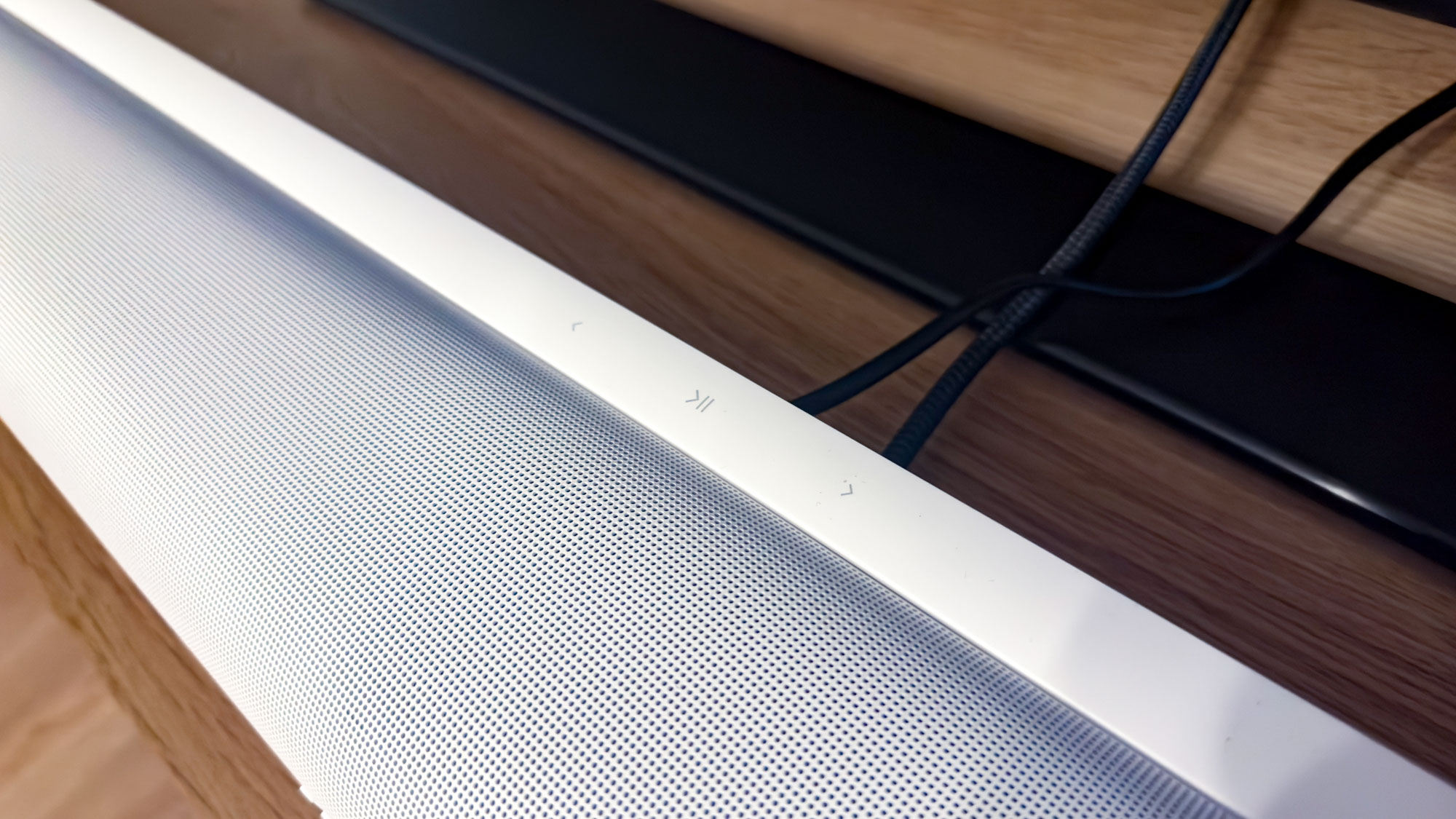
The Sonos Arc Ultra on its own is already pretty impressive for Dolby Atmos when you're watching movies — but adding in the extra spatial audio capability of the pair of Era 300s elevated things to a whole new level.
There were now double the height channels coming from different parts of the room, working together to make things move every which way above your head. There's extra side virtual surrounds for stuff happening on either side of you, and then the physical rear channels afforded by the speakers being behind you.
All in? Everything sounds unreal. Every single one of my test movie scenes blew me away. There was massive bass depth from the subwoofer, and everything happening around me made sure that I was immersed in the scenes. This whole thing took a whole lot longer to write because I just couldn't stop watching my movies — I had to force myself to turn Star Wars off.
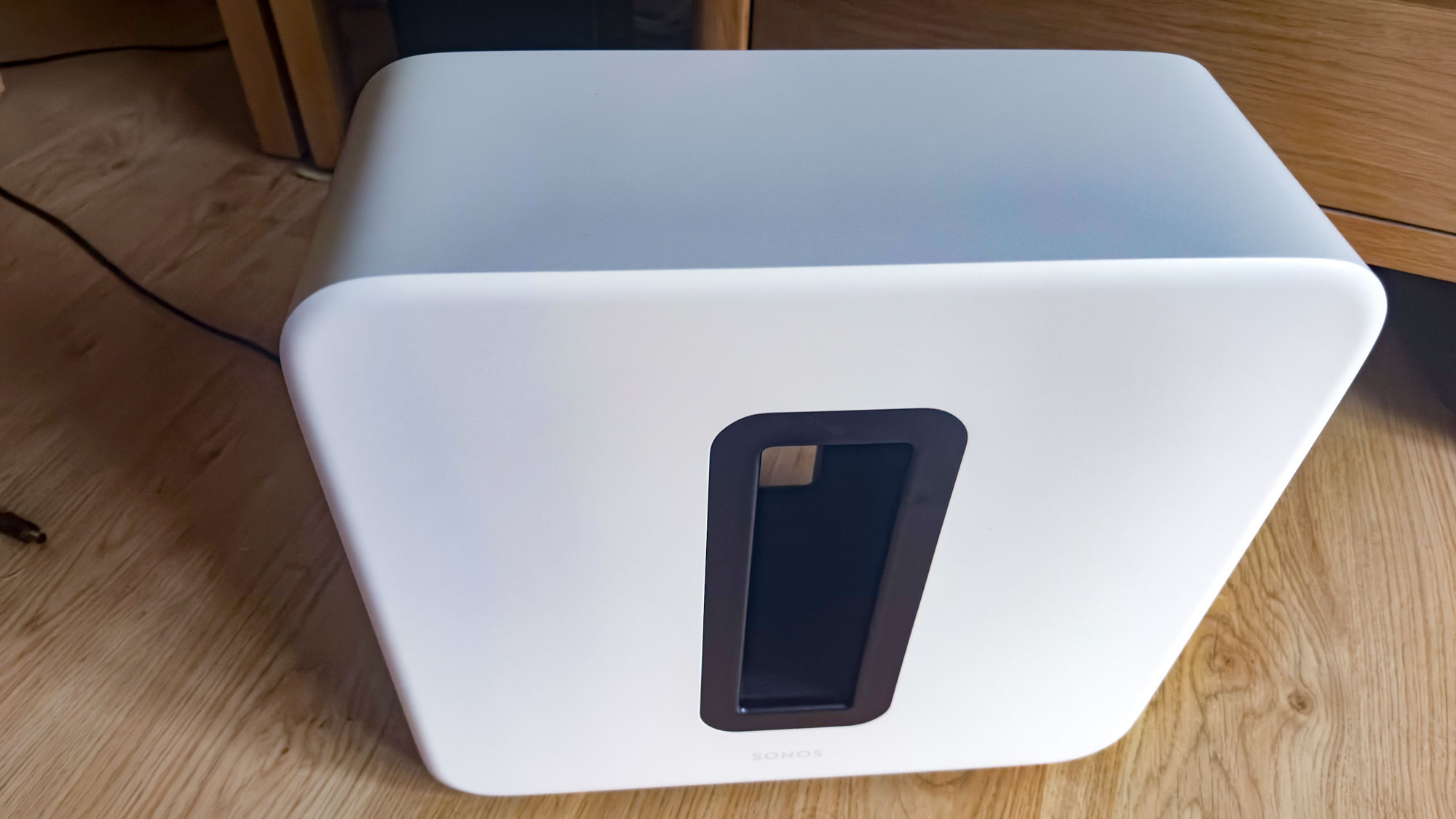
The frenetic action of the opening scene of "Star Wars: Episode III" put me directly in the middle of the space battle over Coruscant. Anakin and Obi-Wan fly over Star Destroyers and the droid fleet in the thick of battle, each laser blast zooming past my head. The dialogue was still able to cut through the rest of the din, however, making sure I could hear what the Jedi were saying.
It was the spatial audio bubble that was the most impressive bit, however. It was clearer, and each element of the soundscape was easy to place within my space. A spinning buzz droid slips off Anakin's ship and wizzes behind me, disappearing into the distance. It's super impressive.
The rest of my testing revealed more impressive surround sound: the car chase from "The Matrix Reloaded," the opening scene from "Kingsman," the rain in The Emperor's Blades in "Dune". Everything sounds huge and makes your movies sound amazing.
Living with the ultimate surround soundbar
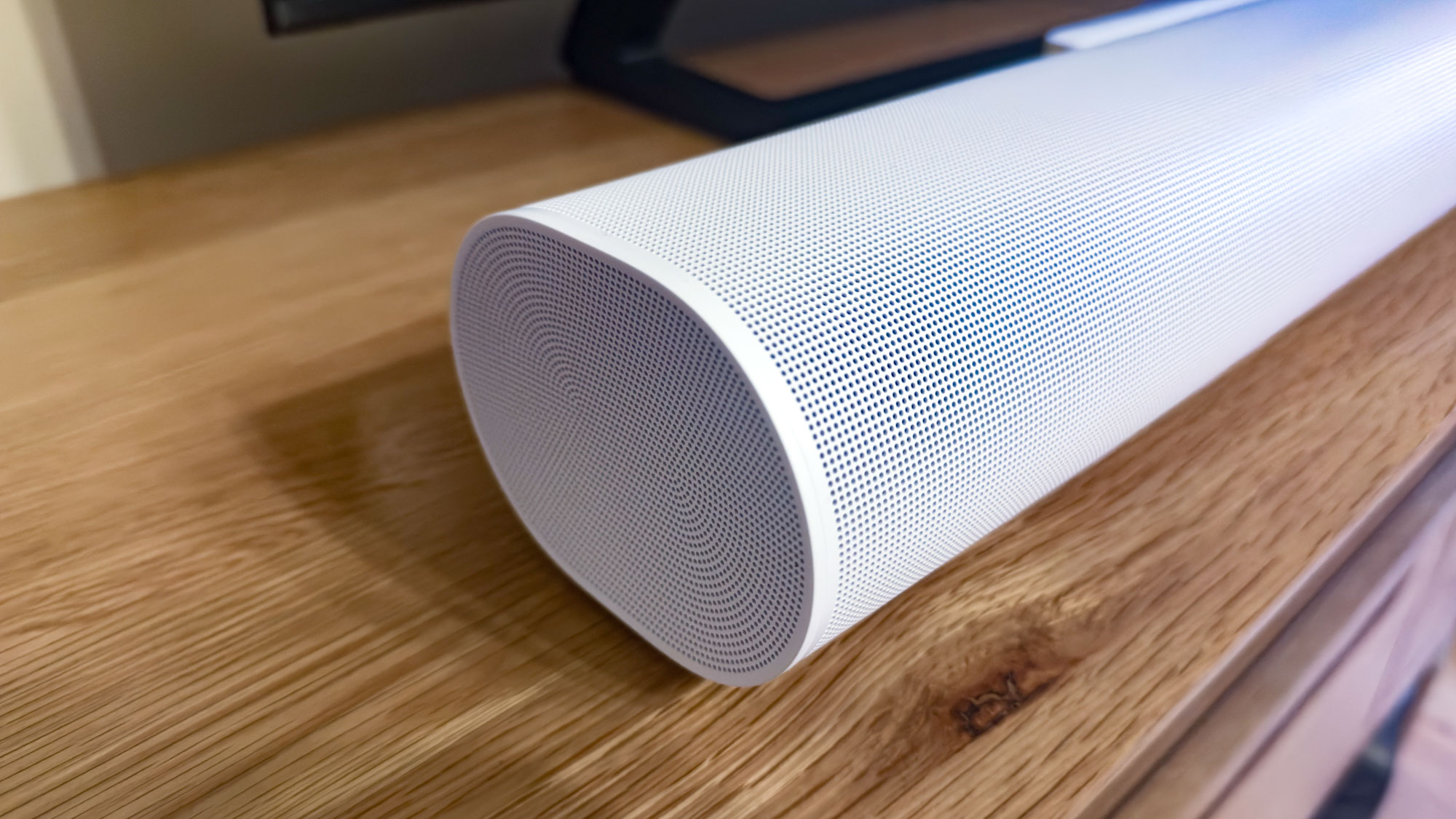
So it sounds really, really good — I don't think I can deny that at all. There's incredible surround sound, the spatial audio feels like a game changer and it even sounded good for spatial music (even if I'm not entirely enamored with the format).
But some liveability quirks are now persuading me to put the Eras back in their old homes. The first is down to them, in fact. They're much larger than traditional surround speakers, taking up a whole lot more space behind the sofa. There are stands that take up less space than the chunky ones that I used, but even then, there's the "uh oh, I might knock these over" factor whenever you walk behind the sofa — as I do, whenever I need to get to the conservatory.
Then there are the power cables to each speaker. When it's a speaker cable, you can more easily route them out of the way and off the floor because they're generally thinner, and all going to one place. The power cables the Era's need are much chunkier and need to be plugged into the wall or an extension block. In my case, I nearly tripped over them multiple times because they had to trail across the floor in a walkway. Not ideal.
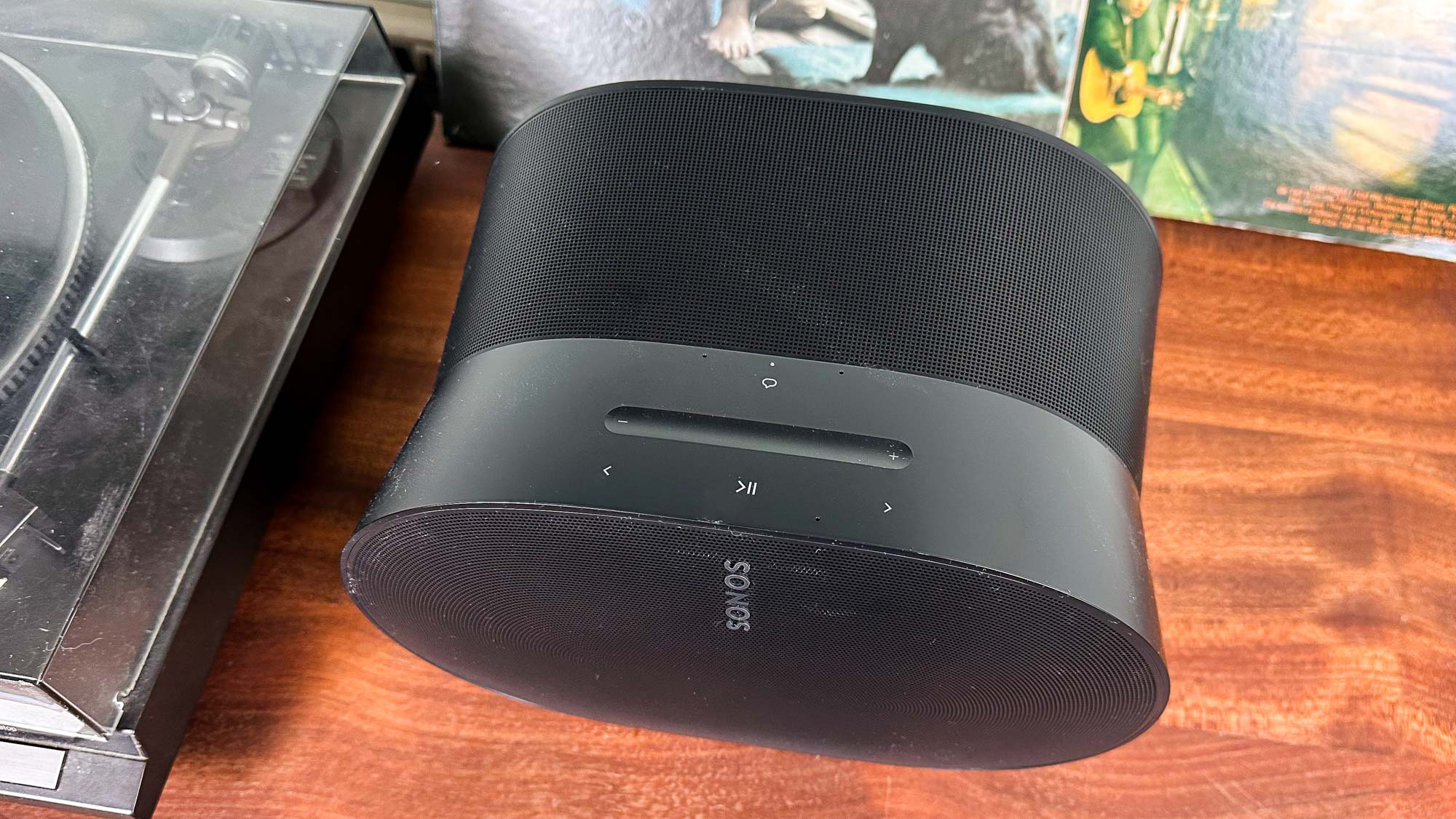
Finally, there are the Sonos app problems that continue to plague all of my Sonos devices. The rear surrounds dropped out a couple of times, there were all the setup issues and I've had problems with getting music playing on the system even through the Sonos app itself.
It's a massive shame, because conceptually, the Sonos Arc Ultra and its surround system are very cool. Wireless surround that uses all of its own amps to save space on your TV stand? And it's all connected to the internet? Great, sounds good.
But the reality just isn't quite there. It sounds phenomenal, and it's incredibly impressive. But, as I now put it all back where it came from, I can't help but think a traditional Home cinema system might not just sound better, but also provide even better spatial audio sound quality thanks to physical surround and height channels. It would have more reliable wired connections, and there would be far less that requires connection to the internet.
Considering that I could pick up a multi-channel true surround system for a very similar price, I do wonder if the wireless nature of the Sonos Arc Ultra and its accompaniments start to make less and less sense — especially considering how annoying the setup turned out to be.
So, I'll be going back to the Sonos Arc Ultra on its own for now — but this experience has whet my appetite for the Dolby Atmos experience. Perhaps it's now time to start looking at amplifiers again...
More from Tom's Guide
- I test audio gear for a living — and I recommend these headphones and earbuds above everything else
- I just tested this stunning $2,400 stereo amp — and my music will never sound the same again
- Samsung Galaxy Z Fold 7 vs. Galaxy Z Fold 6: Biggest expected changes

Tammy and her generous collection of headphones have found a new home — Tom's Guide! After a two-and-a-half-year stint as iMore's resident audiophile, Tammy's reviews and buying guide expertise have more focus than ever on Tom's Guide, helping buyers find the audio gear that works best for them. Tammy has worked with some of the most desirable audio brands on the planet in her time writing about headphones, speakers, and more, bringing a consumer focussed approach to critique and buying advice. Away from her desk, you'll probably find her in the countryside writing (extremely bad) poetry, or putting her screenwriting Masters to good use creating screenplays that'll never see the light of day.
You must confirm your public display name before commenting
Please logout and then login again, you will then be prompted to enter your display name.
